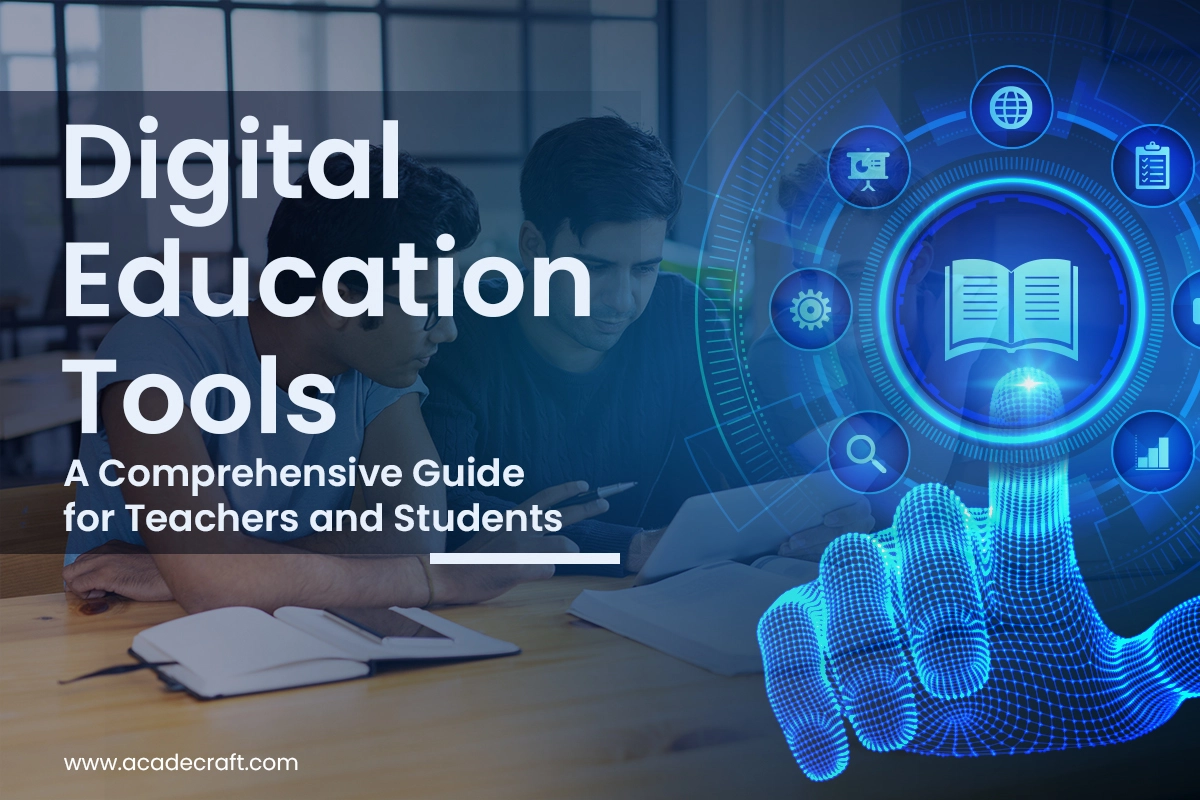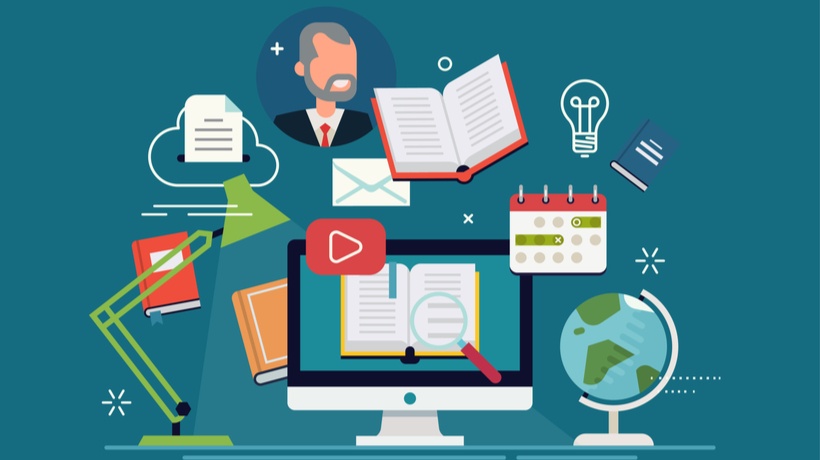Digital education refers to the use of digital technologies to facilitate learning. It encompasses online courses, virtual classrooms, and e-learning platforms.
Digital education is transforming the learning landscape, offering flexibility and access to a vast array of resources. As technology advances, educational institutions increasingly integrate digital tools to enhance the learning experience. This shift towards digital platforms allows students to learn at their own pace and access materials from anywhere in the world, breaking down traditional barriers to education. [Digital Education].
Teachers also benefit from digital education, utilizing a variety of multimedia and interactive tools to engage students and cater to diverse learning styles. The trend towards virtual learning environments is poised to continue, making education more inclusive and adaptable to the needs of a global student population. With digital education, the future of learning is interconnected, dynamic, and centered around technology’s potential to customize and improve the educational journey.
The Digital Education Landscape
The world of education is transforming faster than ever. Brace yourself for a journey into the heart of the digital education landscape. Interactive lessons and virtual classrooms are the new norms. Tablets and laptops have become as common as pencils and notebooks. Let’s explore some key facets of this exciting digital shift.
Shifts In Learning Modalities
Classrooms are no longer bound by four walls. Learners engage from anywhere, breaking the time and location barriers. Here’s how learning modalities are changing:
- Traditional face-to-face education evolves into blended learning environments.
- On-demand resources allow self-paced learning, ensuring no one gets left behind.
- Interactive platforms fuel collaboration, with tools for students and teachers to connect in real time. [Digital Education].
Technology Integration In Classrooms
Classrooms are becoming high-tech hubs. Here’s a glimpse at the tech making an impact:
| Technology | Use in Education |
|---|---|
| Interactive Whiteboards | Makes lessons dynamic and engaging |
| Educational Software | Personalizes learning experiences |
| Virtual Reality (VR) | Brings abstract concepts to life |
With each technological advancement, education becomes more immersive and tailored to individual learning styles.

Credit: www.acadecraft.com [Digital Education].
Personalized Learning Platforms
Personalized Learning Platforms are revolutionizing the way we understand and engage with education. Tailoring learning experiences to individual needs, these platforms offer unique paths for every learner. They keep students motivated and in tune with their own learning pace. Let’s explore how these platforms are making learning more dynamic.
Adaptive Learning Technologies
Adaptive Learning Technologies form the backbone of personalized education. These smart-systems adjust content in real time. They respond to a student’s strengths and weaknesses. This ensures every learner receives challenges just right for them.
- Immediate feedback helps students correct mistakes on the spot.
- Content difficulty adjusts automatically, providing a tailored experience.
Ai And Customized Education Paths
Artificial Intelligence (AI) drives customization in learning. AI analyzes performance data to design custom education paths. Each student gets a unique journey through their subject material.
| AI Feature | Benefits |
|---|---|
| Pattern Recognition | Predicts future learning needs. |
| Personalized Suggestions | Offers resources suited to learner’s style. |
AI also enables the creation of interactive learning environments. These environments adjust to various learning styles, ensuring more effective education.
Growth Of E-learning Solutions
The landscape of education transforms as e-learning solutions blossom. This digital shift redefines teaching and learning experiences worldwide. Enabling education without physical borders, e-learning connects students to new possibilities. The exponential growth in this sector opens doors to innovative learning methodologies. Let’s explore some fascinating facets of this digital revolution.
Online Course Platforms
Online course platforms serve as digital classrooms. These platforms offer a diverse range of topics. Learners across the globe can access expert knowledge. Students and professionals gain new skills through these courses. The platforms provide flexibility and customization. Users can learn at their own pace. They can select from video lectures, interactive content, and quizzes.
Mobile Learning And Apps
Mobile learning makes education portable and user-friendly. Educational apps empower learners to study any subject from their devices. These apps often include games, flashcards, and tutorials. They create engaging and interactive lessons. Mobile apps cater to different learning styles and ages. They support lifelong learning and offer consistent educational opportunities.
Virtual And Augmented Reality In Education
Imagine stepping inside a biology textbook or walking on the moon
without leaving your classroom. This is the magic of Virtual Reality
(VR) and Augmented Reality (AR) in education. Today’s students embark
on interactive learning journeys that were once science fiction.
Immersive Learning Environments
Immersive learning takes students beyond traditional classrooms.
VR headsets transport users to different worlds. Here, learners
engage their senses to explore and interact
with their surroundings. From dissecting frogs to piloting aircraft, these
environments offer lifelike experiences. [Digital Education].
- Active Engagement: Hands-on activities enhance memory.
- Mixed Reality: Combines the real world with digital elements.
- Sensory Input: Hear, see, and touch the learning material.
Ar/vr Educational Content
Content for AR and VR in education spans across subjects. Historical tours,
chemistry experiments and astronomy lessons are popular.
| Type | Uses |
|---|---|
| AR Apps | Overlay educational content on real-world objects. |
| VR Modules | Stand-alone lessons for in-depth study. |
Developers create interactive content aligning with curriculum goals. Teachers select
resources that best fit their lesson plans. Students learn by doing,
a powerful tool for knowledge retention.
Gamification Of Learning
The Gamification of Learning is transforming how we understand and engage with education. By incorporating game elements in educational settings, learning becomes not just informative, but also incredibly fun. This approach catches the attention of learners of all ages, turning the acquisition of knowledge into a captivating adventure. [Digital Education].
Engagement Through Educational Games
Educational games break the monotony of traditional learning methods. They introduce challenges, goals, and rewards that keep students hooked. Players aim for high scores, badges, or levels, driving them to continue learning. These games also offer instant feedback, helping learners understand their progress in real-time.
- Interactive Challenges: Motivate learners by setting clear, achievable goals.
- Instant Feedback: Shows players where they excel or need more practice.
- Peer Competition: Encourages students to outdo themselves and others.
Game-based Learning Outcomes
| Outcome | Details |
|---|---|
| Improved Memory | Games often require remembering steps or facts. |
| Problem-Solving Skills | Learners tackle obstacles and puzzles in the games. |
| Team Collaboration | Many games need players to work together to win. |
Game-based learning tools measure how well students understand the material. Rewards in the form of digital tokens or progression to new levels fuel their desire to learn. As such, games prove to be powerful educational allies, promoting cognitive development and problem-solving skills.
- Games apply real-world contexts, making abstract concepts tangible.
- Learners often can explore and learn at their own pace, fostering self-directed learning.
- With collaborative play, games build teamwork and communication skills.

Credit: elearningindustry.com [Digital Education].
Data-driven Instruction And Assessment
Data-Driven Instruction and Assessment stand at the forefront of modern education. They transform how schools teach and assess students. Using data, teachers identify each student’s needs, strengths, and areas for growth. Schools craft personalized learning experiences. They ensure instruction aligns with student progress.
Learning Analytics
Learning Analytics allow educators to make informed decisions based on hard data. They track student performance over time. Insights lead to targeted teaching approaches. Key benefits include:
- Personalized Learning Paths: Tailored to student needs
- Early Intervention: Identifies who needs additional support
- Outcome Improvements: Students reach higher achievement levels
Continuous Assessment Models
Continuous Assessment Models offer real-time feedback loops. They assess learning at regular intervals. This helps in the following ways:
| Feature | Benefit |
|---|---|
| Instant Feedback | Student insights lead to immediate action |
| Adaptive Learning | Tools adjust complexity based on the ability |
| Goal Setting | Students set and achieve tangible targets |
Collaborative Technologies And Learning
In the realm of digital education, collaborative technologies stand as pillars that support interactive learning. These technologies bridge distances, connect minds and foster team-based educational experiences. The result is a dynamic learning environment where knowledge circulates freely, leading to enriched education.
Social Media As Learning Tools
Social media is no longer just for sharing selfies. It’s a powerful educational tool. Platforms like Twitter and Facebook bring students together. They also create communities where ideas thrive. Look at these ways social media enhances learning:
- Discussion Threads – Debates and question-answer sessions on complex topics
- Networking – Connect with experts and peers worldwide
- Project Collaboration – Share files and work together in real-time
- Instant Feedback – Teachers give quick pointers on assignments
These interactive platforms make study sessions engaging and practical.
Cooperative Online Learning Spaces
Online learning spaces unite students for cooperative learning. They provide environments that foster interaction, communication, and joint problem-solving. These virtual rooms are essential for group projects and peer learning.
| Feature | Benefit |
|---|---|
| Video Conferencing | Mimics classroom discussions |
| Shared Digital Whiteboards | Visualizes concepts easily |
| Real-Time Editing | Enables collaborative document work |
| Interactive Polls | Gathers opinions quickly |
Online learning spaces are effective for teamwork and increase engagement. They prepare students for future digital collaboration in the workplace.
Challenges And Considerations
As we embrace the digital era, digital education evolves rapidly. Yet, it’s not without its bumps along the road. Teachers and students alike face unique challenges. Let’s explore some of these issues.
Digital Divide And Access
Equal access to digital tools isn’t a reality for all. This gap, known as the digital divide, affects educational outcomes.
- Availability of devices
- Internet connectivity
- Digital literacy
We must consider solutions to bridge this divide. Accessible technology and resources can level the playing field.
Privacy And Data Security In Education
Protecting personal information is key in a digital classroom. Cyber threats and data breaches pose risks to privacy.
| Concern | Action |
|---|---|
| Data Security | Implement strong safeguards |
| Privacy Policies | Ensure transparency |
Students and parents need to trust their data is safe. Educators and technology providers must work together to protect it.
Preparing Educators For Digital Advancements
The digital age has revolutionized how we learn. It challenges educators to keep pace. Preparing Educators for Digital Advancements is vital for future learning environments. Schools need digitally literate teachers to guide students effectively. This segment explores how to equip teachers for this shift.
Teacher Training For New Technologies
Embracing digital education means mastering new tools. Teachers need regular training for this. Let’s dive into how continuous professional development is the blueprint for success.
- Workshops introduce interactive platforms.
- Online courses keep teachers flexible and informed.
- Peer collaboration fosters shared learning.
Hands-on experiences in technology-rich environments ensure teachers can apply new skills confidently.
Supporting Faculty With Tech Tools
Quality teaching tools empower educators. Schools must provide access to the best resources. This support can transform teaching strategies.
| Resource Type | Benefits |
|---|---|
| Educational software | Enhances lesson planning and grading. |
| Learning management systems | Streamlines course content delivery. |
| Communication platforms | Facilitates student-teacher interactions. |
With access to these tools, faculty can craft dynamic, interactive lessons that engage learners.

Credit: knowledge society.Danube-region.eu
Future Prospects Of Digital Education
As we step into a future where technology blends with education, it’s clear that digital learning is more than a passing phase. The Future Prospects of Digital Education are bright and promising. Evolving technologies are set to revolutionize how we learn, teach, and interact with information.
Predictive Trends In Edtech
EdTech is not just about the present; it’s paving the way for future learning landscapes. Here are key trends likely to influence the course of education:
- Personalized Learning: Technology will tailor lessons to each student’s pace and style.
- Immersive Learning: Virtual Reality (VR) and Augmented Reality (AR) will bring subjects to life.
- Artificial Intelligence: AI will provide real-time insights into students’ progress.
- Flexible Education: Online platforms will enable learning from anywhere, anytime.
Shaping Future Curriculums
Curriculums are set to transform with digital education. Their design will reflect 21st-century skills and competencies:
| Element | Focus |
|---|---|
| Interactivity | Engaging content that promotes participation |
| Critical Thinking | Challenges that ignite analysis and problem-solving |
| Creativity | Tasks that encourage innovation and originality |
| Collaboration | Projects that require teamwork across digital platforms |
These changes emphasize skills such as problem-solving, collaboration, and digital literacy. They aim to prepare learners for future challenges.
Frequently Asked Questions For Digital Education
What Do You Mean By Digital Education?
Digital education refers to teaching and learning through digital platforms, utilizing electronic resources and tools to facilitate knowledge acquisition remotely or in person. It encompasses online courses, e-learning materials, and interactive digital content for students of all ages.
What Is Digital Learning And Examples?
Digital learning involves education through electronic resources, often online. Examples include virtual classrooms, e-books, and educational apps.
What Is The Meaning Of Digital School?
A digital school integrates technology for teaching and learning processes, utilizing digital tools and online resources to enhance education.
What Is An Example Of A Digital Curriculum?
An example of a digital curriculum is Khan Academy’s online platform, offering courses across various subjects for K-12 education.
Conclusion
Embracing digital education opens vast horizons for learners everywhere. It dismantles traditional barriers, offering flexible, accessible learning paths. As technology evolves, so do our educational opportunities. Let’s keep advancing our methods to educate and empower the digital generation ahead. Stay curious, stay learned, stay ahead.

I’m based in the USA, Canada, Australia, and the UK—four vibrant countries with rich educational landscapes and diverse news ecosystems.
Feel free to adjust and personalize this introduction to reflect your unique voice and experiences. Happy writing! 📝✨

